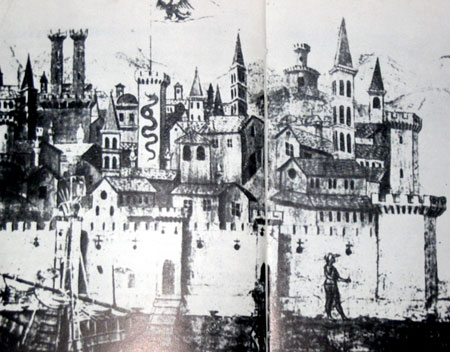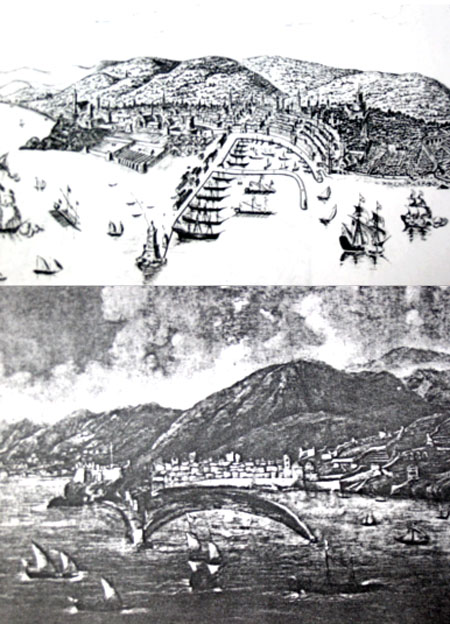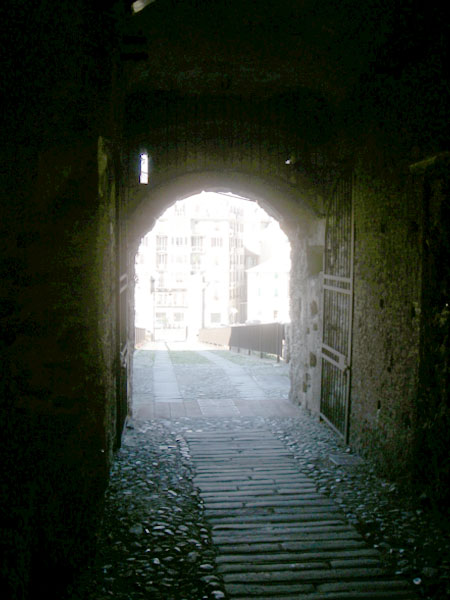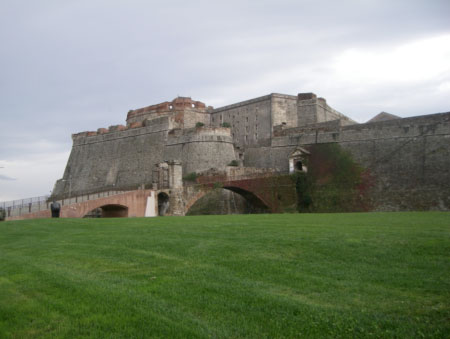The Priamar in Savona.
Critical reading of a besieged fortress.
In Between east and west : transposition of cultural systems and military technology of fortified landscapes edifir edizioni Firenze, 2012
"The structure of a place is not a fixed, eternal condition: usually places can change, sometimes quickly. This does not mean that the genius loci has to change or be lost. " Norberg-Schulz
"Going back to the unthought-of source, the spring of which remains a promise for the future." M. Heidegger

he fortresses fall into a category of built heritage. This heritage requires specific knowledge that may generate actions contributing to resistance to multiple degradation processes.
This knowledge is therefore a source of openness of mind for the project.
But how to measure the extent of this project ?
Can the studied objects be sufficient to determine the nature of the project in which they participate ?
Why is this question fundamental when the risk of the heritage management is enormous within a certain period of the History when everything happens very quickly, where the power of time disaggregation may be amplified by that of "progress" ?
Are not we witnessing a reduction in points of views even though the means we dispose to sharpen our eye become better and better ?
By concentrating ourselves on the future of a fortress, a single fortress in a unique urban context, we may possibly refine our thinking more generally in reference to the future project affecting our environment, our "landscape" we live in, essential dimension of our identity.
It is thus fundamental to "hold in its custody" the ethical character of the thinking about heritage.
At the source of the thinking there is philosophy, and the concepts flows swirling around the knowledge are called to transcend it in order to boost its response capacity to help us act.
Thus, according to C. Norberg-Schulz who often quotes the philosopher Heidegger, the "historiality" may find its place here to amplify knowledge.
Historial is something that “begins a story."
The "Priamar" in Savona is now known as the fortress built by the Genoese in the sixteenth century (Figure 4). But this name of the ancient origin, mysterious by nature (porous rock/sea ? port ?) is the name of the place where a story of the city to "become the world" like Genoa itself or Marseilles or some other famous cities, began.
The classic history reveals the fate of this "Priamar", the heart of a flourishing city in the early sixteenth century. The Genoese punished Savona and the Priamar was then "crowned" with a fortress, and the core of the city of Savona with its palaces and its cathedral disappeared (Figure 1).

Figure 1 : Le foisonnement de la première moitié du XVème siècle
A glaze allowed to move the walls away from the rest of the city (Figure 2). The heart was ripped out of the city.

Figure 2 : Savona dans son intégrité et la rupture
And the history brings us to the fortress of today, the cultural heritage, of a cultural vocation, dedicated to museums, exhibitions, performances. This new "place" is protected. And what about the future ?
But is it really a place ? What place ?
Let’s go back to where the story started... the birth, the heart of a city / harbor.
The Priamar has now been carefully cut off the city. The attempt of showing the remains to advantage is also a means of "freezing" the surrounding space, of turning it into a green area which we enjoy today.
Savona lost its center five centuries ago ... and has not found it. There was a war, violence and the violence continues, it is even reinforced by the recognition of the object "Priamar fortress."
The Priamar is a landmark/ a non landmark/ not a landmark. The works of Kevin Lynch made us realize that a landmark is essential for building the image of the city. The fortress as it is and as a representation is a foreign body, certainly visible, even impressive, but out of the town, out of the urban public space.
And tracking is not only synonymous with orientation in the city but also with a representation of the urban ensemble, linked to the value attributed to the places. Old Marseille of the Greek origin is not the center of the town, it is its soul. The fortress as it is would not (know what it is to) be the soul of Savona.
If we consider the past of Priamar as "the way of his being coming from the future", the future will then probably be called historial, that started a story. And only then will emerge an idea of refitting not only of the fortress, but of the city in its integrity, a project of a reconquest of the fortress, besieged and invested even today by the vacuum of its remorse. And, as written by Vladimir Jankelevitch, "remorse is powerless because revocation of the irrevocable is impossible." So what ?
One day this reconquest took place in Perugia which suffered a similar fate and "avenged". Why not in Savona? How could the city storm the fortress to regain its center and strengthen its being? And thus enrich the citizens’ imagination, a fundamentally political act by the additional responsibility resulting from it !
But under these circumstances what is the knowledge of the fortress itself ? It is fundamental. This entity is and will persist. It will not be destroyed; we live in the "responsible" epoch. The fortress will be able to resist and a new entity will be born from the fight, it will certainly not be a reconstruction of the past. One may envisage some osmosis with the city not delivered to blind sedimentation, but to thoroughly thought-of sedimentation, a creator that imposes the amplitude of the vision of the future.
Creative also means 'Art', "City Art", which differs from architecture defined by Kevin Lynch, perhaps provocative, depresentification of “ONE" to open new perspectives.
Critical reading is at this price.
And we are registered in a hypercomplexity of questioning.
And still ... A quick glance allows to perceive a link between the gate of the fortress and an ancient street in Savona, a narrow hallway that prompts the relationship through the dialogue of the streets, the internal track of the fortress and the narrow street corridor, beyond the glacis (voir figure 3).

Figure n°3 : Le dialogue des voies
Yet the vision of "Priamar" gives us a thrill (figure 4) ! Emotion is present, and let’s imagine a new and abundant life around and in a « Priamar/no more fortress », the thrill could then be closer to that which one feels on seeing or mentioning the "Panier" of Marseilles (the hills of ancient Marseilles) or an ancient district of Genoa.
Thrill, abundance, life...
The fact of taking into account the sensitive dimension, so dear to the phenomenologist Michel Henry, has probably been justified here by its neighborhood with the knowledge in a field where pure science itself can rob us of thinking, sticking too much to the object of its study.
The "Priamar" and of course every other fortress, becoming "being" and thus "place" - to different degrees - have much to teach to us

Figure n°4 : Priamar aujourd’hui
To return to the top of the page© Michel Perloff - Mentions légales - Création : Marion Pruneau

